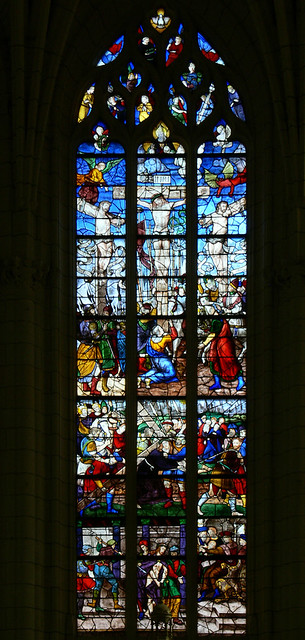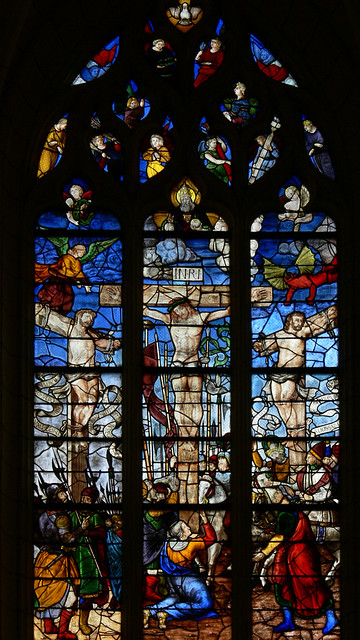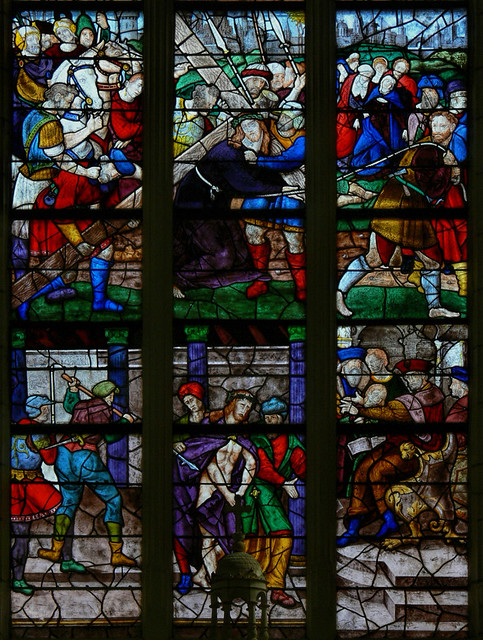Crucifixion - Montresor, France

The Crucifixion window in the Church of Saint John the Baptist at Montrésor, in the Indre-et-Loire region of France, is one of the finest surviving examples of early sixteenth-century stained glass in the Loire Valley. Filling a tall Gothic lancet divided into several vertical lights, it unfolds as a vivid narrative of the Passion of Christ, rendered in rich Renaissance color and form.
The window dates from about 1530 to 1545. Though it retains the pointed Gothic framing of the church’s architecture, its design belongs firmly to the French Renaissance, marked by an increasing sense of perspective, balanced composition, and classical humanism. It was probably commissioned by Imbert de Batarnay, Seigneur de Montrésor, a powerful courtier and counsellor to several French kings, who endowed much of the church’s decoration during this period.
Stylistically, the glass belongs to the Tours School, a regional center of stained glass production active in the early sixteenth century. The artists responsible remain anonymous, but their work shows the influence of painters such as Jean Pénicaud the Elder and Jean Cousin the Elder, whose art combined the vigor of local craftsmanship with the grace of Italianate design.

At the top of the window is the Crucifixion itself. Christ hangs on the central cross, flanked by the two thieves, with angels hovering above to receive the blood flowing from his wounds. Around the base of the crosses gather the Virgin Mary, Saint John, soldiers, and mourners, each figure animated by expressive gestures and faces of poignant realism. The deep blues and rubies of the sky and garments, combined with delicate grisaille shading, lend the scene both brilliance and gravity.

Below, successive tiers recount the events leading to the Crucifixion. In the middle register, Christ is shown carrying the cross, surrounded by a tumult of soldiers and followers in vivid Renaissance dress. In the lowest panels appear the Flagellation and the Mocking of Christ, rendered with striking energy: soldiers in bright hose and plumed caps lash and jeer while Christ, bound and weary, endures his torment. The arrangement of scenes creates a vertical progression from suffering to redemption, culminating in the figure of Christ elevated on the cross above all earthly turmoil.
In the nineteenth century, the window underwent restoration, almost certainly by the Lobin workshop of Tours, led successively by Julien-Léopold and Lucien-Léopold Lobin, who were celebrated for their careful conservation of Renaissance glass throughout the Loire Valley. Thanks to their intervention, the Montrésor Crucifixion retains much of its original splendor and narrative power.
